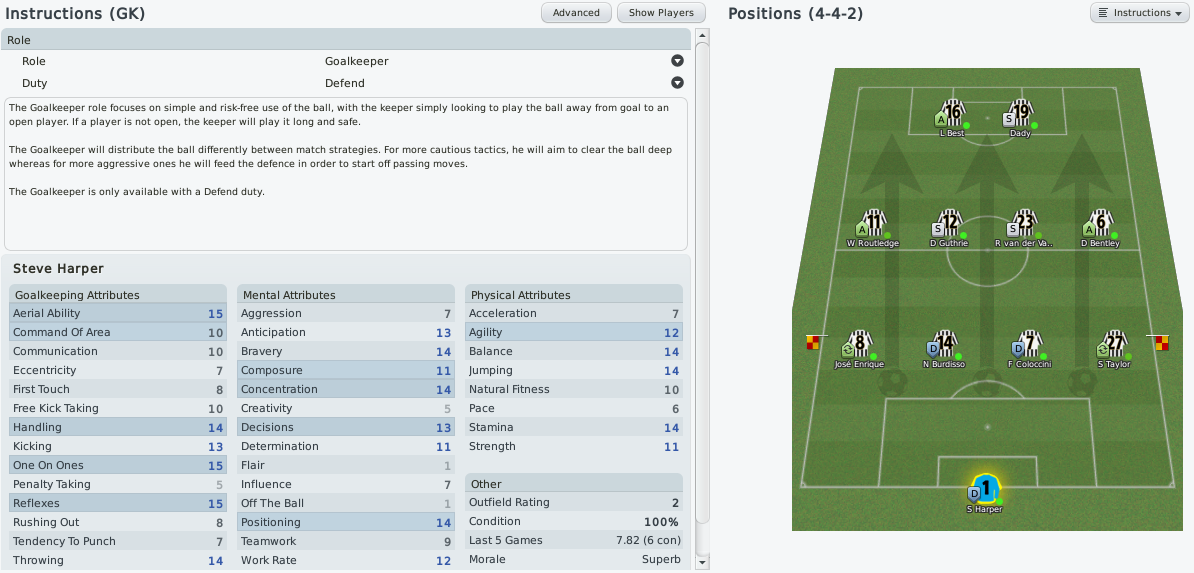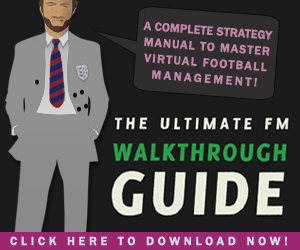-
Recent Articles
Building your defence: Football Manager full backs
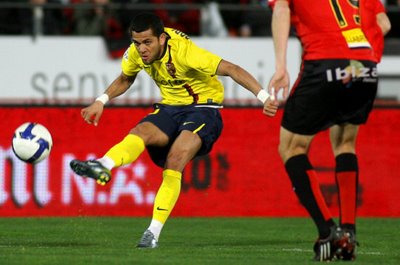 The modern full back is quickly becoming one of the most important players on the team sheet, infact even back in the days of Brian Clough, fat ed' argued that because of the space these players get in the final...
The modern full back is quickly becoming one of the most important players on the team sheet, infact even back in the days of Brian Clough, fat ed' argued that because of the space these players get in the final...False Nine Tactics
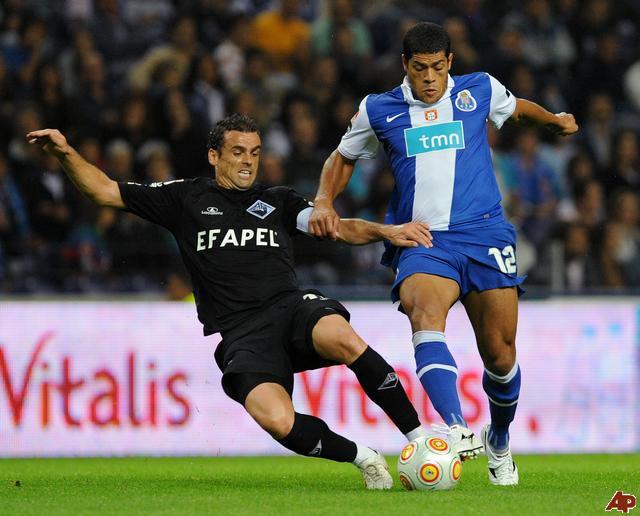 When we think about modern football trends, we think about the fall of the 4-4-2, the introduction of inverted wingers and the rise of the 4-5-1. But there is one other tactical rise that seems to have...
When we think about modern football trends, we think about the fall of the 4-4-2, the introduction of inverted wingers and the rise of the 4-5-1. But there is one other tactical rise that seems to have...An Open Letter To The Football Manager Community
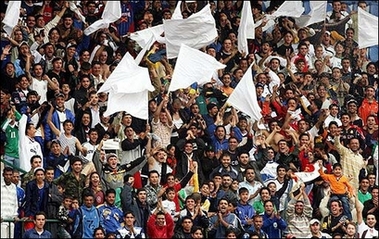 To view Sports Interactive's response, click here FM-Britain will no longer be producing regular content. Sports Interactive have objected to our content model of charging for annual strategy guides,...
To view Sports Interactive's response, click here FM-Britain will no longer be producing regular content. Sports Interactive have objected to our content model of charging for annual strategy guides,...How Will Jose Mourinho Manage at Real Madrid? (Part 7)
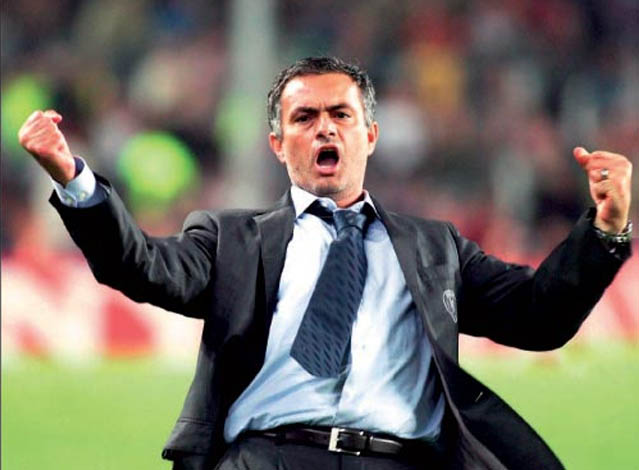 Last time around I showed you the gaping holes in my tactical plan. Against smaller teams, my players were not imposing themselves enough on the game, nor were they able to break through more disciplined...
Last time around I showed you the gaping holes in my tactical plan. Against smaller teams, my players were not imposing themselves enough on the game, nor were they able to break through more disciplined...From Giant to Underdog: Managing a Bulgarian Powerhouse (Part 3)
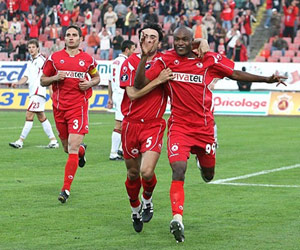 After setting the tactics for our team in the previous post, we'll look how they are going to play out in a game situation. Our first friendly will give us a chance to see how our players will handle the tactics. The...
After setting the tactics for our team in the previous post, we'll look how they are going to play out in a game situation. Our first friendly will give us a chance to see how our players will handle the tactics. The...
JOIN 6,907 READERS - SUBSCRIBE NOW TO OUR FOOTBALL MANAGER NEWSLETTER
Get the latest FM news & best community content delivered directly to your e-mail inbox!
Tactical Theorems & Frameworks ’09: Foreword & Introduction
Written by: Richard Claydon
Category: Strategy
Posted on: November 23, 2008
November 23, 2008
Foreword by Paul Collyer
One of the great pleasures of developing Football Manager, and CM before it, over the years has been the role of the community in helping us develop and shape the game. This guide is one of the best examples of how a community can enhance a game and add to the experience of those playing it.
The tactical interface and system in Football Manager 2009 has prompted much discussion and debate over the years, and I have been following the theorems contained herein since they first appeared back in 2005. Now while I know the match engine code pretty well, and understand in coding terms how things translate from tactics to match, I have to admit that some of the things I have read here have opened my eyes to the way the match works in the eyes of the user, as well as inspiring me to make things work even better.
So I have pleasure in personally recommending this guide for both new and experienced FM players, and hope you get as much from it in terms of game play, not to mention on field success, as those who spent time creating it.
Over to Richard and Gareth…….
Introduction
History
Tactical Theorems and Frameworks ’09 (TT&F ’09) is the sixth in a series of tactical guides aimed at helping the virtual manager get the best out of the Football Manager tactical module. Its first iteration originated from a series of experiments during the early days of FM06 that were undertaken in the belief that there were serious flaws in the Match Engine. These experiments disproved the hypothesis, showing the original writer that he didn’t know as much about football as he had previously thought and the first TT&F, posted in November 2005, which both praised and explained the FM06 engine. The thread was stickied in the GQ section of the SI Games forums and quickly became a significant player in the development of virtual tactical theory.
With later versions of Football Manager, TT&F became more sophisticated, expanding its ambitions and tactical strategies and recruiting a large and knowledgeable following that significantly contributed to its development. Unfortunately, it began to drift towards jargon, heavyweight managerial references and excessive numerical detail, thus becoming largely inaccessible for the casual user. By FM08, while still being congratulated by contributors, it had lost direction and was being overwhelmed by threads promising super-tactical solutions to the Match Engine. These ‘super-tactics’ were not just in fundamental opposition to TT&F, but often generated frustration and anger for users, as they tended to produce unrealistic matches in which possession and chances were dominated by the losing team. Despite this seeming domination, the numerous chances created were often very poor and easily defended by the AI team. Many users failed to recognise the half-chance nature of the attacks and some resorted to accusations of a random Match Engine, super-keepers and a cheating AI.
TT&F ’09 has taken all of this on board and aims to confront it head on. First and foremost, we aim to overcome the user frustrations and accusations of AI cheating that have plagued recent versions of Football Manager. None of the regular contributors to TT&F have ever found Football Manager to be exasperating, overly unfair, full of super-keepers or horribly unrealistic. Furthermore, in relation to the complaints of randomness, TT&F’s methodology ensures the Match Engine produces excellent looking football and match situations in which managerial decisions, good or bad, make obvious differences. Finally, TT&F’s philosophy has always been that virtual and real world football management requires a multiplicity of tactical strategies, rather than one super-tactic, in order to combat numerous different match situations and footballing styles. In discussing these elements in jargon-free detail, TT&F ’09 hopes to bring the enjoyment levels and in-depth tactical knowledge of its regular contributors to a much wider audience. With luck, more and more virtual managers will embrace some or all of the TT&F concepts and find Football Manager ’09 to be a fully satisfying gaming experience. We certainly hope so.
Philosophy
There are five important definitions and beliefs that underlie TT&F.
Definition of Formation: A formation is the basic framework deciding the position of each player, i.e. a 4-4-2 has four defenders, four midfielders and two attackers. Likewise, a 4-3-3/4-5-1 formation has four defenders, one defensive midfielder, two central midfielders, two wingers and a centre forward.
Definition of Tactics: Tactics operate within the formation framework. A 4-4-2 at home will differ heavily from a 4-4-2 away. In a home formation, the wingers may hug the touchline, support the attackers and be given a fair degree of creative freedom. In an away formation, they may be asked to tuck in, support the full backs, and be ready for quick breaks when the potential reward outweighs the risk.
Football Manager Tactics: When designing tactics, one slider tweak alters the tactical instruction but not the overall formation. When discussing tactical instructions, we will talk about them in the context of a single unspecified formation.
Changing Tactics: No team ever goes through a match without some switches in tactical strategy. The extent to which these tactical changes work defines the course of the match. They may not be recognisable to the casual viewer but they happen nonetheless. The same applies to in-match management in Football Manager. Playing the same tactic all game in the belief that because your players are superior you will inevitably win and/or failure to recognise and change your tactics when things are obviously going against you will not bring you titles. In-game decision-making is absolutely vital to TT&F tactical theory and to be successful you will need to learn when and how to apply each tactical change.
The Successful Manager: Teams and managers are generally successful due to a combination of four things: good tactical management, good man-management, good transfer policy and availability of funds. Failure to manage any of the above is likely to lead to a season of poor performances and disillusionment. We will assume you are capable of managing transfers and can recognise good players in relation to level, so we will not elaborate further on these aspects here. Suffice to say, with roughly the right calibre of player for your division our tactical theory should help you on the path to success. However, if you don’t have the right calibre of player, you will almost certainly struggle. If you regularly make perfect decisions you can survive with poor players, but it will be difficult. We promise no miracles, just good tactical design.
To learn more about the player, transfer and man-management side of Football Manager visit the good player and tactical forums at FM-Britain and SI Games.
Scope
TT&F ‘09 has been totally rewritten to take into account the significant match engine improvements over the FML and FM’09 Beta tests. While its main priorities are to maintain its focus on producing realistic looking football and to facilitate the switch to the arrowless engine, it has expanded in scope to include the following:
Manager Style: distinct managerial styles require distinct tactical strategies. Ranging from the detailed and precise tactical plans of Jose Mourinho to the motivational simplicity of Kevin Keegan, TT&F ‘09 outlines eight mentality systems and their real world tactical and managerial equivalents
Translating the Sliders: by focusing on real world tactical language and minimising the focus on slider notch numbers, TT&F ‘09 enables managers to quickly and easily design fully effective tactics for any match situation and formation
Player Roles: by detailing player roles and illustrating how they combine with each other and the mentality systems, TT&F ’09 explains how tactics work from the ground up
Match Strategies: TT&F ’09 outlines five easy to design match strategies that slot into whichever of the eight managerial philosophies you choose to implement
Choosing your Pitch Size: TT&F ’09 explains how tactics fit with pitch sizes, enabling you to choose the ideal pitch for your home matches and make effective changes for different pitch dimensions
Individual Player Theories: TT&F ’09 outlines how to get the best performance out of each standard player position within each managerial strategy
Specialist Position Theories: TT&F ’09 explains how to get the best performance out of the following player types:
• Sweeper Keeper
• Sweeper/Libero
• Deep-Lying Playmaker
• Box-to-Box Midfielder
• Advanced Playmaker
• Target Man
• Poacher
• Complete Forward
Opposition Instructions: TT&F ’09 explains how to employ OIs to counter different formation types and limit the influence of your opponent’s key players
Limitations
There are certain elements of the Football Manager experience that TT&F does not cover. This section briefly underlines their relation to tactical success.
Manager Reputation: All squads will need time to adjust to and respect your managerial and tactical decisions. You won’t get the best out of your players until you have installed a sense of discipline throughout your squad.
Squad Gelling: If your squad has not gelled, then the team will not play well, no matter how good your tactical plans. Starting the game with a shaky squad will limit success as will buying in huge numbers of players. Playing conservative football in these situations gives the squad a chance to grab points. Given enough gelling time the squad will be able to play a more expansive game.
Man and Media Management: If your man/media management skills are poor, you will upset your players, fans and board, which will cost you matches. Learn how your players respond to certain media and player interactions and team talks so you are able ensure they are motivated for every match.
Transfer and Financial Strategies: A club that overspends and builds an overly large squad will generate unhappiness. Likewise, a club that has no ambition in the transfer market will fail to capture the quality of player required for success. Focusing on and acquiring logical targets that fit your squad and wage structure will ensure a relaxed dressing room and consistently good performances.
Training Programmes: To get the best performance possible out of your team, you will need to shape players to your tactical vision. Tailored training regimes ensure that the manager has a wealth of potentially ideal players at his disposal, allowing him to turn his tactical vision into reality.
Set Pieces: Extremely important but not covered. Did you think we were going to spoon-feed you everything?
We hope you enjoy reading this as much as we enjoyed writing it and that it helps you to fully understand and appreciate the tactical elements of FM09.
Good luck and play well
wwfan
About The Author: Richard Claydon
Tactical theory has evolved massively down the years, from Diablo-style beat-’em-alls through Cleon’s era to the present day systems inspired by wwfan’s theories. Richard is considered to be the authority on FM tactics, and was approached by Sports Interactive to help write the new tactical interface in Football Manager Live and Football Manager 2010.
Download Our Tactical Theorems '10 eBook Absolutely Free

Presenting the most comprehensive tactic design and match strategy guide to the Football Manager series ever created!
Written by FM match engine beta testers, it's 60+ pages of easy-to-read concepts and ideologies for getting your team playing exactly how you want each match! It's been downloaded over 100,000+ times to date!
Find out more information about our tactical eBook
and download Tactical Theorems '10 right now!
Written by FM match engine beta testers, it's 60+ pages of easy-to-read concepts and ideologies for getting your team playing exactly how you want each match! It's been downloaded over 100,000+ times to date!
and download Tactical Theorems '10 right now!


